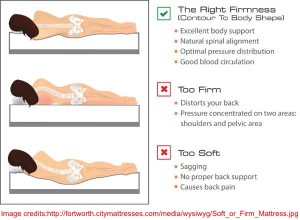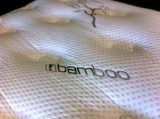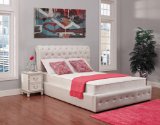| Feature |
Memory Foam |
Latex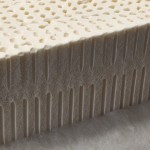 |
Inner-Spring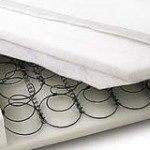 |
Adjustable Air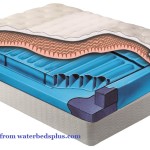 |
|---|---|---|---|---|
| 1. Supports proper weight distribution and correct alignment of the spine, head, shoulders, buttocks, and heels |
++ | ++ | – | + |
|
The key here is a ‘medium-firm’ mattress ⇒ the best mattresses give the right amount of support on the main pressure points (buttocks, heels, shoulders, and head) ⇒ supports the spine at all points allowing it to maintain its natural alignment (References: 2 scientific studies here and here)
|
||||
| 2. Absorbs motion so that your partner’s tossing and turning won’t wake you up |
++ | + | – | + |
| The average person moves as much as 40-60 times a night, including several full body turns. While some people are not bothered at all, others are very sensitive to their partners’ ‘moves’. If you belong to the latter category, this is definitely something you’d want to think about. You may even want to consider buying a split-queen or split-king type of adjustable bed. | ||||
| 3. Quiet when your partner turns and rolls | + | + | – | + |
| Usually, it is the rubbing together of coils that make spring mattresses noisy. However, high-quality modern-day innerspring mattresses have coils that are wrapped with cloth to keep them from rubbing together. These innerspring mattresses don’t creak and whine every time a partner rolls up or gets in/out of bed. However, there are a few models out there that are still manufactured without the cloth wrapping and are therefore noisy. | ||||
| 4. Easy to turn in your sleep and get out of bed |
– | + | + | + |
| Turning your body and even getting out of bed is easiest with firmer mattresses. The softer they are, the more you sink and the more difficult it is to come out of that ‘hole’. This is NOT a problem with a medium-firm memory foam mattress, however, CAN be a problem with soft memory foam mattresses (we don’t recommend you go with too soft a mattress for multiple reasons) | ||||
| 5. Mattress sags (body impressions) over time |
+ | + | – | – |
| Latex rubber and memory foam have an open-cell structure. So when you compress them, you don’t break anything. The air just leaves the cells temporarily and then comes back in once the ‘weight’ goes away. This is how these mattresses ‘spring back’ to their original height/shape when you get out of bed. With good quality memory foam and latex mattresses, sagging is minimal to non-existent. They will lose no more than 1 – 3% of the original height through their lifetime.
In contrast, the poly foam layer on top of innerspring mattresses have ‘closed’ cells. When you compress them, these tiny cells can break open and the air leaks out. Once they ‘break open’, the sponginess goes away. Once the sponginess goes away ⇒ you have sagging setting in. It’s kind of like what happens to bubble wrap once your kids play with ’em! In addition, the springs/coils can also lose their ‘springing back’ action over time. Certain research indicate that spring mattresses lose as much as 16% of its ‘springing back support’ within the 1st year itself, a very disappointing statistic! Air mattresses also can sag if the pressure is too low or if a poly foam top padding is used. |
||||
| 6. No need to rotate the mattress every 3 months | + | + | – | + |
| Memory foam and latex, as mentioned earlier, have very good ‘spring back’ qualities, and therefore don’t sag as mentioned earlier. This is why memory foam and latex mattresses don’t need to be flipped. In contrast, spring mattresses lose their ‘spring back’ abilities fast and are therefore highly prone to sagging. The only way you can minimize this sagging is by rotating (head and foot) and flipping (topside and underside) the mattress on a regular basis. That way, you’re not sleeping on the same spot continuously and thereby maximizing its lifespan. | ||||
| 7. Sleeps cool |
– | – | + | + |
| About 10% of memory foam and latex mattress users have reported of ‘sleeping hot’ issues. Memory foam (visco-elastic polyurethane), upon encountering your body heat, softens and molds nicely around your body. This is the very characteristic of memory foam that helps support your head, neck, shoulders, hips, knees, heels etc. resulting in proper alignment of the spine and a good, ache-free night of sleep. However, this ‘molding’ also causes a little bit of heat retention. About 10% of memory foam mattress users find this annoying, especially during the hot summer months. However, today, manufacturers have come up with solutions to this problem. A popular solution is infusing memory foam with certain types of gels. This is how gel memory foam mattresses were born! Bamboo based mattress covers have also been able to counter this problem successfully. High-density memory foam causes more heat retention than low and medium-density memory foam mattresses; another important point to keep in mind when shopping for mattresses. | ||||
| 8. Can be shrink wrapped and rolled up for easy delivery/transport | + | – | – | + |
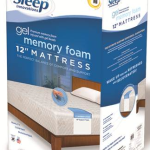 Non-inflated air mattresses obviously can be folded, no surprises there! But did you know that memory foam mattresses can be vacuumed to suck the air out and shrink wrapped in a relatively small box for shipping? This is how they’re shipped to your doorstep, in a relatively small box that a toddler will struggle to fit into! Non-inflated air mattresses obviously can be folded, no surprises there! But did you know that memory foam mattresses can be vacuumed to suck the air out and shrink wrapped in a relatively small box for shipping? This is how they’re shipped to your doorstep, in a relatively small box that a toddler will struggle to fit into! |
||||
| 9. Hypoallergenic and anti-microbial |
+ | + | – | + |
| Innerspring mattresses generally have a poly foam topping. The foam disintegrates as it ages and turns into dust. In contrast, foam and latex have antimicrobial properties and are resistant to dust mites and mold. That’s why certain brands of memory foam mattresses are marketed as ‘hypoallergenic’! | ||||
| 10. Suitable to use on adjustable beds |
+ | + | – | – |
| Out of the 4 types of mattresses, innerspring mattresses are the firmest and therefore the least flexible. So, when your adjustable foundation takes all kinds of different positions like zero-gravity, lounge, anti-snoring etc. etc., your spring mattress will NOT flex nice and tight with the bed base. This is why spring mattresses are the least suitable type for adjustable beds. | ||||
| 11. Firmness is adjustable |
– | – | – | + |
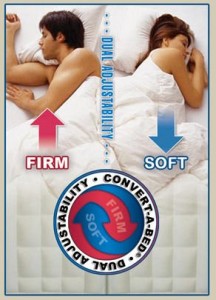 Each half of adjustable air beds can be inflated independent of the other half. This way, you and your partner can sleep on the same bed, yet have a different firmness level according to your personal preferences. You can also increase/decrease the firmness of each side as many times as you want. However, in reality, if it’s the same person that’s sleeping on the mattress, you’d rarely want to change the firmness once you find that sweet spot. However, adjustable air mattresses carry disadvantages like punctures/leaks and possible malfunctions in the air pump, hose etc. Each half of adjustable air beds can be inflated independent of the other half. This way, you and your partner can sleep on the same bed, yet have a different firmness level according to your personal preferences. You can also increase/decrease the firmness of each side as many times as you want. However, in reality, if it’s the same person that’s sleeping on the mattress, you’d rarely want to change the firmness once you find that sweet spot. However, adjustable air mattresses carry disadvantages like punctures/leaks and possible malfunctions in the air pump, hose etc. |
||||
| 12. “Off gassing” odor | – | + | + | + |
| Memory foam mattresses are treated with flame-retardants to comply with federal standards regarding mattress flammability. When you purchase a brand new memory foam mattress, these chemicals (known as VOCs; Volatile Organic Compounds) escape or “off gas” out of the foam. This can cause an unpleasant odor. The good news is that the smell is temporary and generally goes away if you air it out for 1 – 2 days. In fact, some manufacturers recommend that you do not use your mattress for 48 hours after unpacking, for 2 reasons: first, to allow it to expand to its normal size, and secondly, to “off gas” completely. | ||||
| 13. Weight | + | – | + | ++ |
| Latex is the heaviest type of mattress and obviously air mattresses are the lightest! The lightweight of air mattresses sometimes can be annoying because they can move around too much on the bed base. This is why these mattresses have to be tied down to the bed foundations more often than not. In contrast, solid core latex mattresses are the heaviest. High-density memory foam mattresses (> 5 pounds per cubic foot OR 5 lb/ft3) are also heavy (upwards of 100 pounds) while medium-density mattresses are relatively light weight (< 50 pounds) | ||||
| 14. Life span | 7 – 15 years | 10 – 20 years | 7 – 10 years | 10 – 15 years |
| 15. Cost | + | – | ++ | — |
| 16. Recommended mattress |
Classic Brands Gramercy 14 Inch Hybrid Gel Memory Foam Mattress |
Ultimate Dreams Latex Mattress |
Signature Sleep Contour Twin Mattress |
 King Size INNOMAX® MEDALLION ADJUSTABLE SLEEP AIR BED MATTRESS King Size INNOMAX® MEDALLION ADJUSTABLE SLEEP AIR BED MATTRESS |

